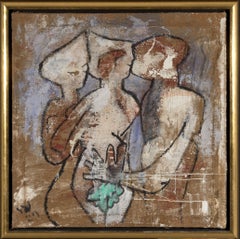1980s Abstract Paintings
Surrealist 1980s Abstract Paintings
Canvas, Mixed Media
Read More
The 1stDibs Guide to Types of Abstract Art
Get to know the key movements and artists who have influenced visual culture for more than a century.
With Works Like ‘Yours Truly,’ Arthur Dove Pioneered Abstract Art in America
New York gallery Hirschl & Adler is exhibiting the bold composition by Dove — who’s hailed as the first American abstract painter — at this year’s Winter Show.
The Hilma af Klint Effect: How the Future-Forward Painter Inspires Artists Today
The early-20th-century Swedish abstractionist took artistic cues from spiritualist writings and occult practices. Now, 21st-century creators are taking cues from her.
Get to Know the Artists Who Led the Op Art Movement
In the 1960s and '70s, the hypnotic creations of Op artists went mainstream and influenced the look of pop culture.
Dorothy Hood’s Boundless Abstractions Are Back with a Fierceness
Works from the impressive oeuvre of the largely unknown Texas native are now on view at Houston's McClain Gallery.
French Artist Marie Raymond Was So Much More Than Yves Klein’s Mom
Seminal works from the mid-20th-century painter's lyrical abstract oeuvre are now on view at Paris's Diane de Polignac Gallery.
For Oliver Lee Jackson, Painting Is a Fierce and Sacred Matter
The artist and activist is the subject of a new show at Washington, D.C.'s National Gallery of Art.
